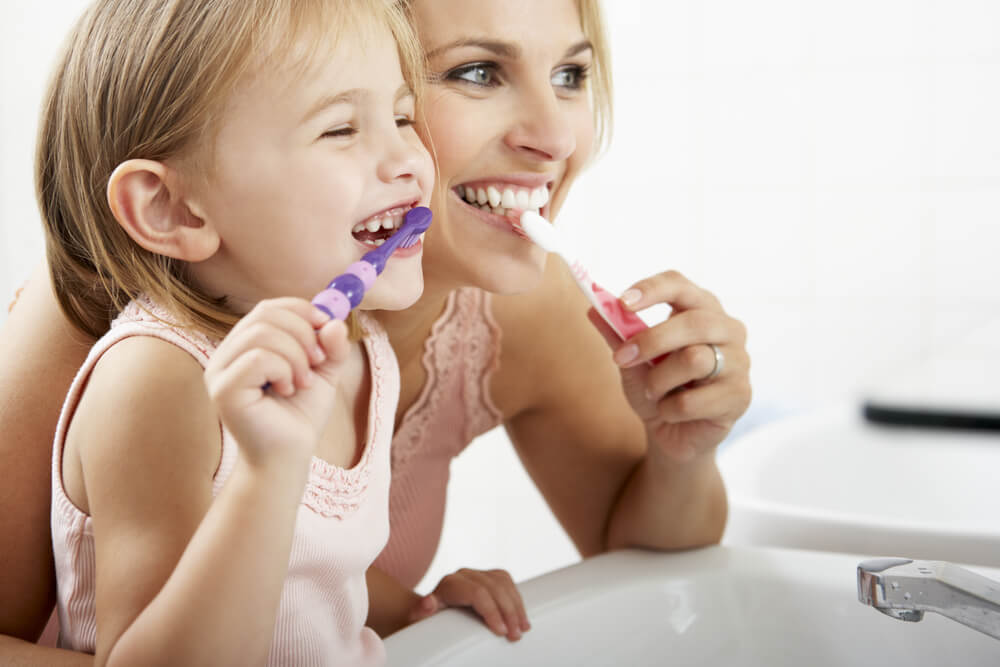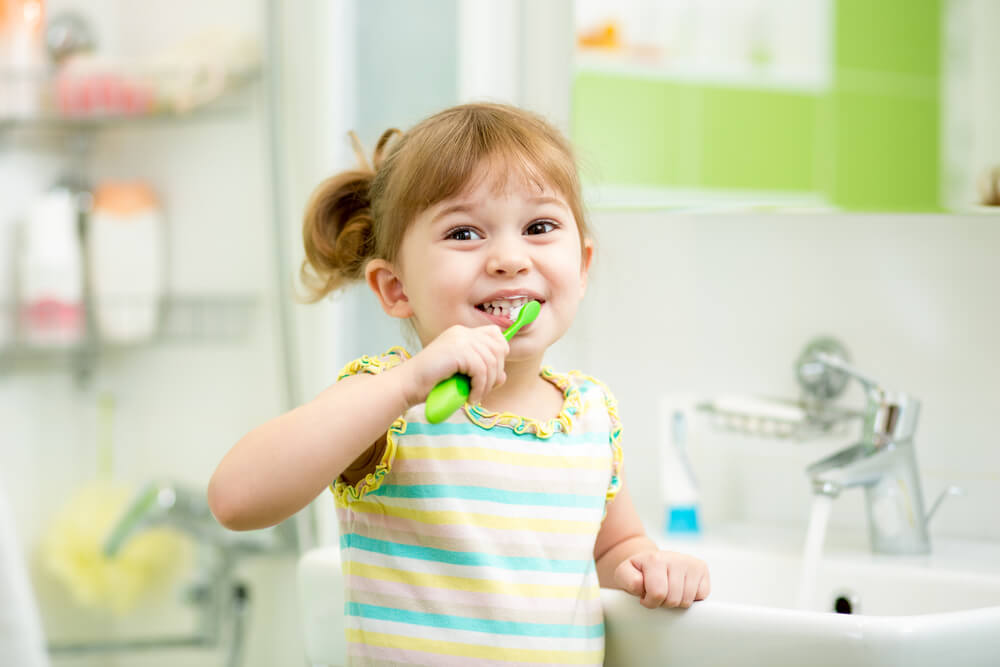
All the kiddos want to be a part of the prestigious Kids Mile High Cavity-Free Club and to do this they’ll need to practice good oral hygiene from a young age with the help of Mom and Dad. As a pediatric dentist in Englewood, Colorado, I’ve received my fair share of parents who seem surprised that those temporary baby teeth are actually important. Aside from the obvious benefit of looking good, healthy primary teeth are placeholders and reserve space for the permanent teeth and allow your little one to speak clearly and chew correctly. Plus, cavities hurt! It’s essential to keep your child’s baby teeth sparkling clean with a regular brushing routine (bonus rhyme for you). We’ll show you the basics with our guide to how to brush your kid’s teeth.
How to Brush Your Baby’s Teeth
You can actually kick-off your baby’s intro to oral hygiene before they’re even sporting their first tooth. It’s a good idea to get into a habit of brushing as early as possible so brushing their teeth becomes as routine as, well, brushing their teeth. Moisten a washcloth or piece of gauze with warm water, wrap it around your finger and gently wipe their gums after feedings.
Around six months, you’ll get to experience teething and we promise it won’t last forever. When your baby’s first tooth erupts, the American Dental Association and American Academy of Pediatric Dentistry both recommend using a smear of fluoridated toothpaste – about the size of a grain of rice. You’ll brush your infant’s tooth or teeth twice per day, once in the morning and once before bed, using a soft toothbrush with a tiny head designed specifically for infants. Keep this up as more teeth come in. Once they have a mouthful, spend two minutes each time brushing and pay a lot of attention to those pesky back molars that tend to be magnets for tooth decay. You can start flossing once any two teeth touch.
Need a Kids Dentist in Denver? Book a Free Consultation Today!
How to Brush Your Toddler’s Teeth
For toddlers under three, you’ll still use a smear of toothpaste and a soft-bristled, toddler-sized toothbrush. For those three- to six-years-old, graduate to a pea-sized amount of fluoride toothpaste. Continue brushing twice a day for two minutes each time, giving the molars special attention and brushing every surface of the teeth including along the gum line. Sometimes kids are afraid of choking or gagging, so always start with the front teeth and slowly work your way to the back ones. Give the tongue a quick brushing too. Make sure they rinse their mouth and spit out the toothpaste when you’re done.

Toddlers can be a little less compliant than a baby when it comes to brushing their teeth as anyone who has a two-year-old or “threenager” can attest to. At this stage, a lot of your work will involve getting them excited about keeping their chompers clean. In addition to finding an awesome pediatric dentist (wink, wink), try modeling good brushing behavior for them by brushing your own teeth in their presence and acting thrilled about it. Let them hold the brush while you guide it so they feel like they’re participating and in control. You can even try to make a game of it by singing songs and using child-friendly ideas like reinforcing the fact they’re banishing the “sugar bugs” or “mouth monsters.”
Brushing School-Aged Children’s Teeth
Again, use a pea-sized amount of fluoride toothpaste until they’re six-years-old. Brush their teeth with an age-appropriate soft-bristled brush for two minutes in the morning and before bed and floss once per day. Once your child has shown they can brush their own teeth, feel free to let them have a go. Just be sure to supervise their brushing until they’re seven- or eight-years-old and discourage them from swallowing excess toothpaste. Replace their toothbrush every three to four months.
School-aged children will require less actual hands-on brushing assistance but you still may find they’re reluctant to brush as much as they’re supposed to. Some positive reinforcement could be in order to help them establish a solid oral hygiene routine. For example, parents can use stickers to track their brushing habits and reward them when they reach a predetermined goal. Colorful toothbrushes and tasty toothpaste will also help.
In addition to brushing and flossing, children should also have regular dental check-ups. If you’re in need of a pediatric dentist in Denver or Englewood, contact Kids Mile High Pediatric Dentistry and we’ll help you develop a plan of action to keep your child’s mouth healthy and cavity-free. We believe preventative care is key and we promise we’ll make it fun (I mean we do have an in-office putting green after all) so they’ll actually look forward to going to the dentist and taking care of their smile.



